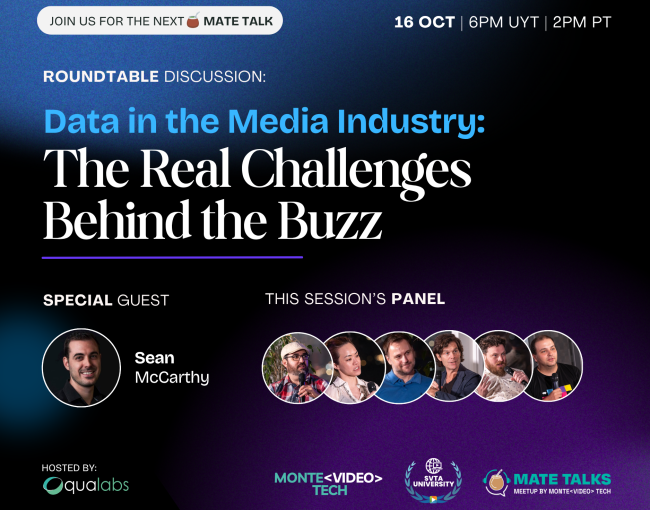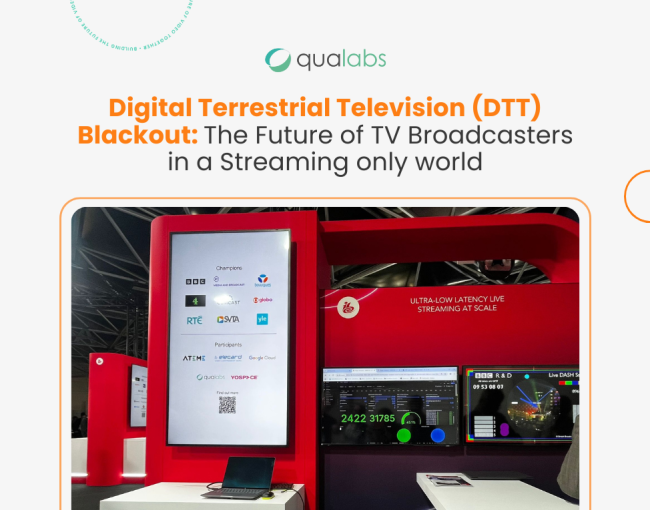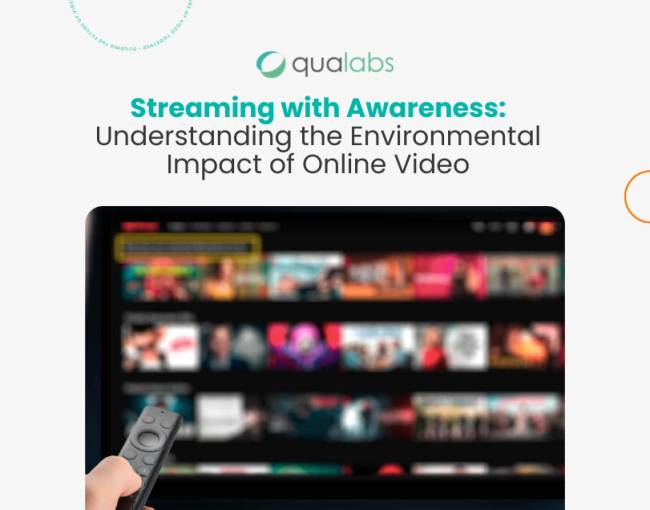⚙️ Enabling Interoperability Between DASH & HLS Ad Workflows
The 6th edition of the MPEG-DASH specification introduces new capabilities for Server-Guided Ad Insertion (SGAI), enabling fully interoperable ad workflows between DASH and HLS—a long-awaited breakthrough for streaming platform teams.
Why interoperability matters:
- Reduces the need to maintain two separate ad tech stacks
- Enables shared logic and tools across all playback environments
- Aligns ad signaling models for better reliability at scale
Zachary Cava, walked us through how this standardization creates a unified timeline control model: “What we think about is this concept of presentation-based insertion events, which lets us move away from format-specific behaviors and into interoperable, timeline-aware signals.”
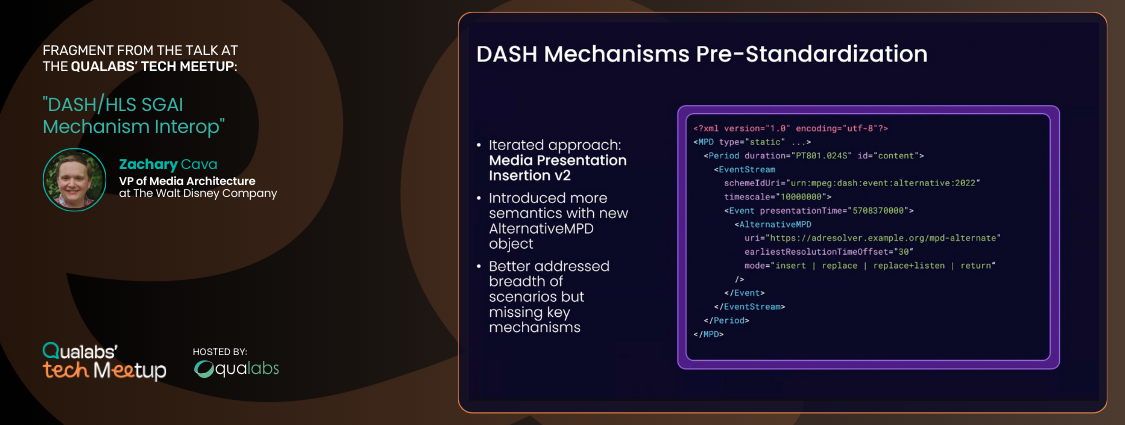
🔁 From Ad Markers to Semantic Playback Events
Historically, ad insertion relied on access-based markers embedded in manifests or sidecar metadata. Now, the new SGAI model introduces structured semantic events that control ad behavior with precision.
Key technical capabilities:
- Preloading assets before the ad break
- Replacement events with time offsets and clip modes
- Return paths to live or VOD timelines post-ad
- Support for nested ad pods and fallbacks
Rather than hardcoding logic into player-side scripts, developers can now define behavior in the manifest, giving more control to the manifest authoring pipeline and reducing player complexity.
This approach enables true frame-accurate ad replacement—even in live workflows—without breaking playback continuity or relying on custom hacks.
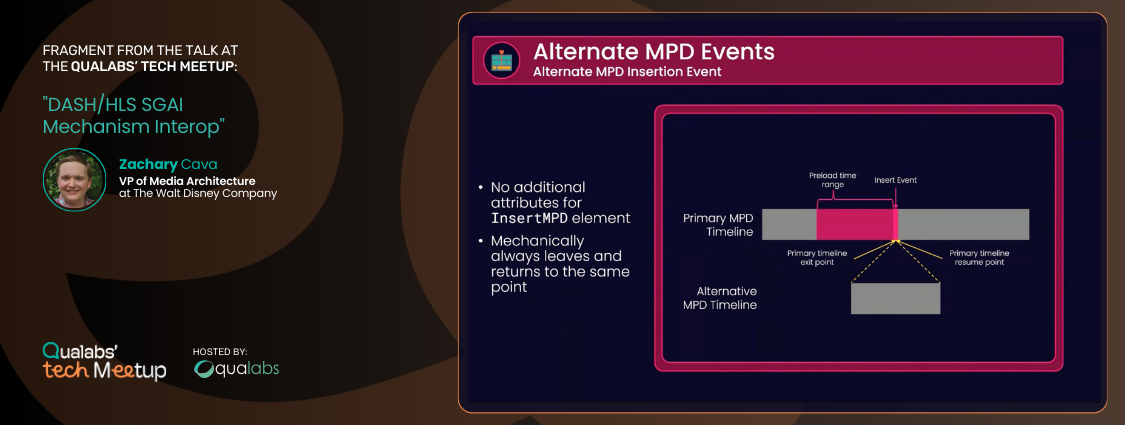
🧪 Testing, GitHub Forks & Real-World Implementation
While the spec is finalized, player implementation is still an evolving frontier. Zachary shared that live replacement is already being tested internally using GitHub forks of major player frameworks. These implementations explore:
- Blackout workflows using replacement timelines
- Dynamic asset switching
- Return-to-stream accuracy for interstitial-heavy environments
“We’re in the phase where we’re testing the edges of what’s possible, getting closer to true interop without patching player code for each format,” Zach said.
As part of this wave of experimentation, Qualabs is actively contributing to the open-source player ecosystem, focusing on real-world implementation of the SGAI spec. In particular, we’ve been working on extending dash.js with support for Alternative Media Presentations, a key component of the new DASH mechanisms enabling frame-accurate ad insertion.
This work not only validates the feasibility of the spec in production-grade players, but also helps surface edge cases and player behavior inconsistencies across environments — especially in live streaming scenarios. It’s part of our commitment to bridging the gap between standardization and adoption, ensuring the tech is not just defined, but usable.
You can explore our contributions directly in this GitHub fork: → dash.js – Alternative Media Presentations (Qualabs)
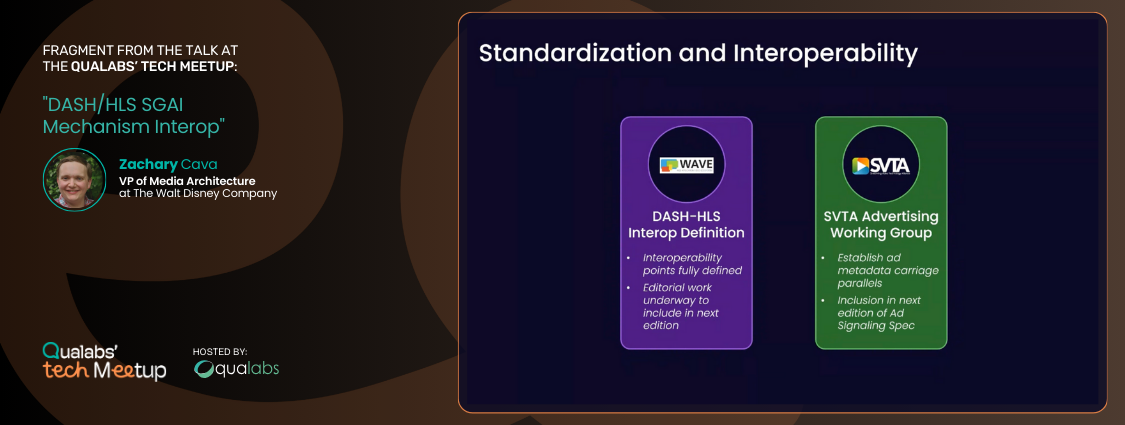
💰 Ad Measurement is the Real Revenue Driver
“Ad insertion doesn’t pay. Ad measurement does.” That was the central message from Olivier Cortambert, Head of Solutions Architecture at Yospace.
Even the most advanced insertion mechanism is irrelevant without precise tracking of ad playback and user interaction. Monetization depends on proving ad delivery and current methods aren’t always reliable.
The challenge:
- Pixel tracking is fragile and often blocked
- Devices report inconsistent signals
- Campaigns span web, mobile, smart TVs, and CTVs—each with unique quirks
- Many players don’t support fine-grained event emission (play, skip, mute, etc.)
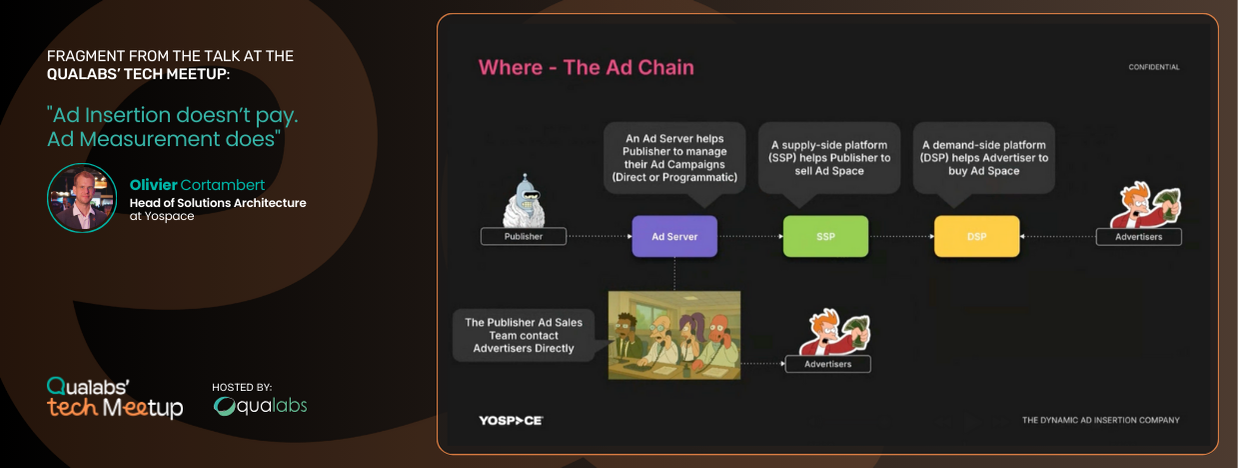
📊 From Pixels to Standards: The Future of Ad Measurement
Olivier emphasized that the era of relying on basic HTTP beacons for ad tracking is over. Moving forward, measurement must be built on resilient, standardized mechanisms that are directly integrated into the playback experience, delivering accuracy, scale, and consistency.
Two emerging standards stand out:
1. SVTA Ad Creative Signalling
A JSON-based standard that allows the Dynamic Ad Insertion (DAI) platform to provide ad metadata—including tracking instructions—to the player in an efficient format. This metadata can be delivered:
- In-band (inside the manifest), or
- Out-of-band, to keep the manifest small.
Because the player itself performs the tracking, the accuracy is as high as it gets—making it the preferred method for advertisers. The player also becomes aware of what’s playing, which unlocks user experience enhancements like showing ad countdowns.
However, this also comes with trade-offs:
- Ads become visible to trackers.
- Since tracking URLs are fired directly from the device, ad blockers can still intercept these requests, even if the ad was actually seen.
2. CTA WAVE CMCDv2
The CMCDv2 standard will allow players to provide the playhead position in a standard format, as well as all trackable events, to an endpoint. This endpoint will then be able to perform ad tracking with fairly high precision.
CMCDv2 is a breakthrough in terms of client-side measurement. With its new ad measurement capabilities, the standard becomes an excellent solution to perform accurate tracking on:
- Devices with limited capabilities, or
- Environments where client-side development is impossible.
These two standards, SVTA Ad Creative Signalling and CTA WAVE CMCDv2, represent a leap forward toward simpler and more accurate ad measurement across platforms. While SVTA provides the most functionality, it does require development on the client. Meanwhile, CMCDv2 enables accurate measurement without any additional code on the device.
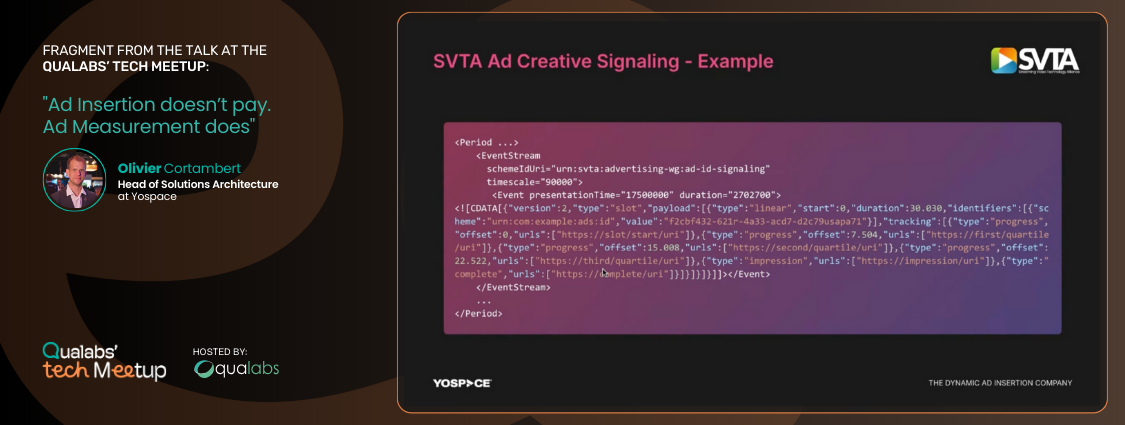
🔮 Advanced Use Cases: From Spot-Level Replacement to Live Stitching
With stronger measurement tools available, streaming platforms can now support more dynamic and personalized monetization strategies, such as:
- Spot-level replacement: swapping out individual creatives within an ad pod
- Back-to-back interstitial management: handling seamless transitions between consecutive ads
- Per-user dynamic ad rendering: customizing ad combinations based on user profiles
- Attention-aware delivery: using visibility APIs to assess whether the screen is actually in view
Final Takeaways
As ad-supported streaming grows, interoperability and measurement are no longer optional—they’re foundational.
At Qualabs, we believe this is a pivotal moment for the industry to align behind open standards that:
- ✅ Simplify cross-format playback
- ✅ Empower declarative ad logic
- ✅ Enable precise, transparent monetization
- ✅ Reduce fragmentation across vendors and devices
What’s Next?
With the latest SGAI spec finalized, and the industry finally working together to define standardized methods for Ad Measurement, the next phase will focus on real-world adoption.
Here’s what’s coming:
- Broader support for SGAI timelines across popular player frameworks
- Client-side ad measurement provided out of the box by widely used players
- Client-guided ad measurement via CMCDv2, as an alternative for environments that don’t allow client-side logic
- Emergence of reference implementations, sample manifests, and test streams to accelerate adoption
The industry is converging on a more unified approach, one that reduces fragmentation and increases monetization accuracy.

